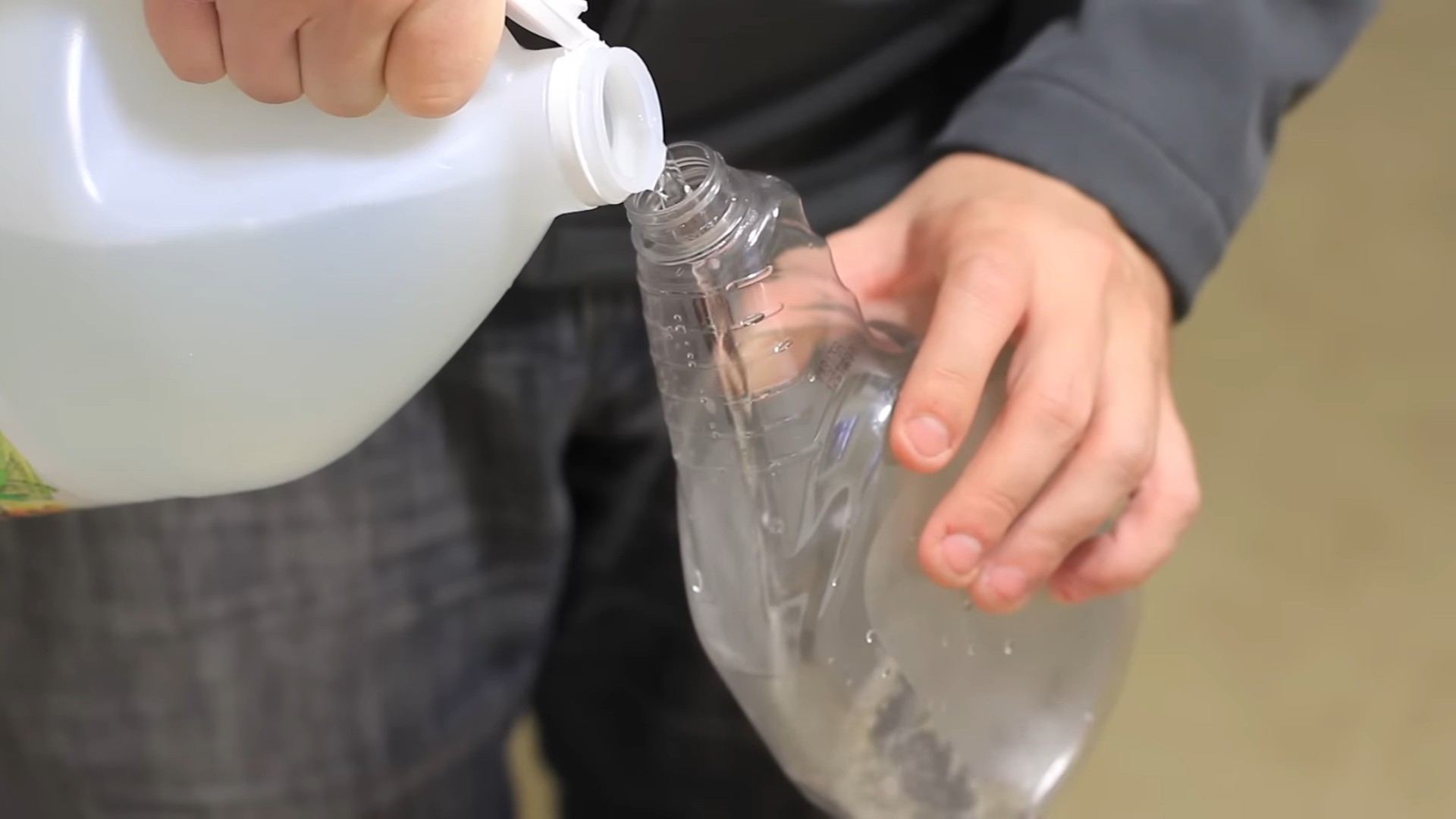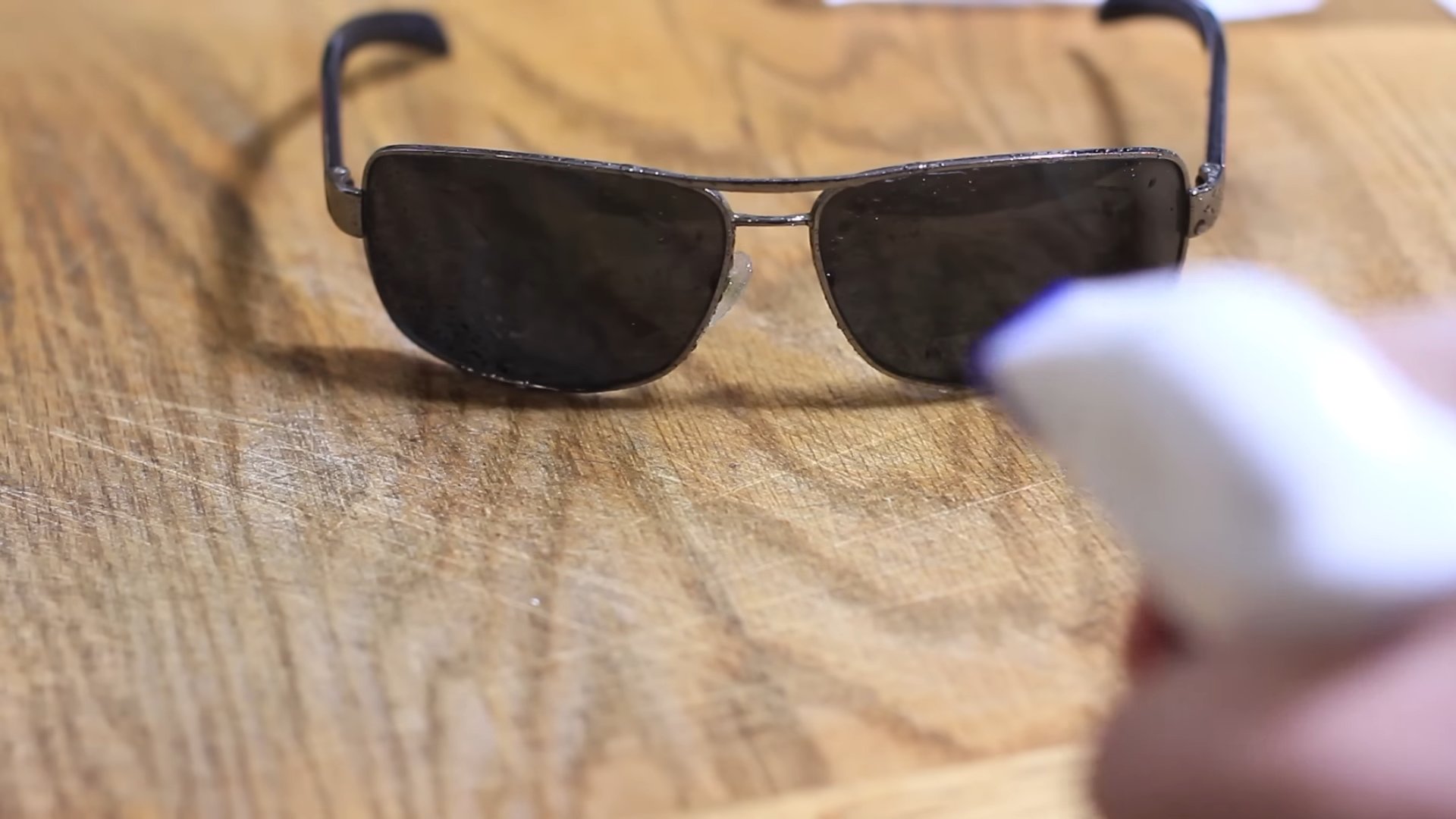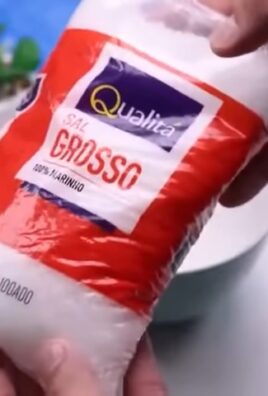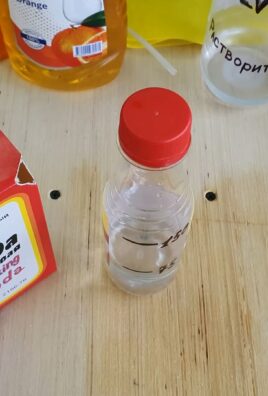Vinegar cleaning hacks – who knew this humble kitchen staple could be your secret weapon to a sparkling clean home? I’m always on the lookout for budget-friendly and eco-conscious ways to keep my space tidy, and let me tell you, vinegar has been a game-changer! For centuries, vinegar has been used for its cleaning and disinfecting properties. Ancient civilizations, from the Egyptians to the Romans, utilized it for everything from preserving food to treating wounds.
But beyond its historical significance, why should you care about vinegar cleaning hacks? Well, think about it: we’re constantly bombarded with harsh chemicals in commercial cleaners. These can be tough on our skin, bad for the environment, and frankly, expensive! That’s where the magic of vinegar comes in.
This DIY article is packed with simple, effective, and surprisingly versatile vinegar cleaning hacks that will revolutionize your cleaning routine. From tackling stubborn stains to deodorizing your fridge, I’ll show you how to harness the power of this natural cleaner to create a healthier and happier home. Get ready to ditch the harsh chemicals and embrace the cleaning power of vinegar!

Growing Iceberg Lettuce: The No-Fail DIY Hack for a Bountiful Harvest
Okay, lettuce lovers, let’s talk iceberg. That crisp, refreshing crunch is a summer staple, but buying it from the store can get expensive, and sometimes it’s just not as fresh as you’d like. So, I’m going to share my foolproof method for growing iceberg lettuce at home, even if you think you have a black thumb! This isn’t just about planting seeds; it’s about maximizing your yield and minimizing common problems. Get ready for a head of lettuce so good, you’ll never look at store-bought the same way again.
Choosing the Right Variety and Starting Seeds
Before we get our hands dirty, let’s talk about the basics. Not all iceberg lettuce is created equal, and starting your seeds correctly is crucial for success.
* Variety Selection: Look for varieties that are heat-tolerant if you live in a warmer climate. ‘Great Lakes’ and ‘Summertime’ are popular choices known for their ability to withstand higher temperatures without bolting (going to seed prematurely). If you live in a cooler climate, you have more options! ‘Ithaca’ is a reliable choice for cooler regions.
* Starting Indoors (Recommended): I highly recommend starting your iceberg lettuce seeds indoors, especially if you have a short growing season. This gives them a head start and protects them from early pests and unpredictable weather.
* Timing is Key: Start your seeds about 4-6 weeks before the last expected frost in your area. You can find your average last frost date online by searching for your zip code.
* Seed Starting Mix: Use a high-quality seed starting mix. This is lighter and more sterile than regular potting soil, which helps prevent damping-off (a fungal disease that can kill seedlings).
* Containers: You can use seed trays, peat pots, or even recycled egg cartons. Just make sure they have drainage holes.
Step-by-Step Seed Starting:
1. Moisten the Seed Starting Mix: Before filling your containers, thoroughly moisten the seed starting mix. It should be damp but not soggy. I like to do this in a large bowl.
2. Fill the Containers: Fill your chosen containers with the moistened seed starting mix, leaving about half an inch of space at the top.
3. Sow the Seeds: Iceberg lettuce seeds are tiny, so sow them sparingly. Place 2-3 seeds in each container, about ¼ inch deep.
4. Cover the Seeds: Gently cover the seeds with a thin layer of seed starting mix.
5. Water Gently: Water the seeds gently using a spray bottle or a watering can with a fine rose. Avoid overwatering, as this can lead to damping-off.
6. Provide Light: Place the containers in a bright, sunny location or under grow lights. If using grow lights, keep them a few inches above the seedlings and provide 14-16 hours of light per day.
7. Maintain Moisture: Keep the seed starting mix consistently moist, but not waterlogged. Check the moisture level daily and water as needed.
8. Thin the Seedlings: Once the seedlings have their first true leaves (the second set of leaves that appear after the initial seed leaves), thin them to one seedling per container. Choose the strongest, healthiest-looking seedling and snip off the others at the soil line with small scissors. Don’t pull them out, as this can disturb the roots of the remaining seedling.
Preparing the Garden Bed
Now that our seedlings are growing, let’s get the garden bed ready for their arrival. Iceberg lettuce needs well-drained soil and plenty of sunlight.
* Sunlight: Choose a location that receives at least 6 hours of direct sunlight per day.
* Soil Preparation: Iceberg lettuce prefers well-drained soil that is rich in organic matter. Amend the soil with compost or well-rotted manure before planting. This will improve drainage, fertility, and water retention.
* Soil pH: The ideal soil pH for iceberg lettuce is between 6.0 and 6.8. You can test your soil pH using a soil testing kit from your local garden center. If your soil is too acidic, you can add lime to raise the pH. If it’s too alkaline, you can add sulfur to lower the pH.
* Weed Removal: Remove all weeds from the planting area. Weeds compete with lettuce for nutrients and water.
* Raised Beds (Optional): Consider planting your iceberg lettuce in raised beds. Raised beds improve drainage and allow the soil to warm up faster in the spring.
Step-by-Step Garden Bed Preparation:
1. Clear the Area: Remove any rocks, debris, and weeds from the planting area.
2. Amend the Soil: Spread a 2-3 inch layer of compost or well-rotted manure over the soil surface.
3. Till or Dig: Till the soil to a depth of 6-8 inches, incorporating the compost or manure into the soil. If you prefer not to till, you can use a garden fork to loosen the soil and mix in the amendments.
4. Smooth the Surface: Rake the soil smooth and level.
5. Water Thoroughly: Water the prepared garden bed thoroughly before planting.
Transplanting and Spacing
The moment we’ve been waiting for! Transplanting our seedlings into the garden. This is a delicate process, so handle them with care.
* Timing: Transplant your iceberg lettuce seedlings outdoors after the last expected frost and when the soil has warmed up to at least 50°F (10°C).
* Hardening Off: Before transplanting, you need to harden off your seedlings. This means gradually acclimating them to outdoor conditions. Start by placing them outdoors in a sheltered location for a few hours each day, gradually increasing the amount of time they spend outdoors over the course of a week.
* Spacing: Space your iceberg lettuce plants 12-18 inches apart in rows that are 18-24 inches apart. This allows them enough room to grow and prevents overcrowding.
Step-by-Step Transplanting:
1. Water the Seedlings: Water the seedlings thoroughly a few hours before transplanting. This will help them to handle the stress of transplanting.
2. Dig Holes: Dig holes in the prepared garden bed that are slightly larger than the root balls of the seedlings.
3. Remove the Seedlings: Gently remove the seedlings from their containers. If using peat pots, you can plant the entire pot directly into the ground. Just make sure to tear off the top of the pot to allow the roots to grow freely.
4. Place the Seedlings: Place the seedlings in the holes, making sure that the top of the root ball is level with the soil surface.
5. Fill the Holes: Fill the holes with soil, gently firming it around the seedlings.
6. Water Thoroughly: Water the transplanted seedlings thoroughly.
7. Mulch (Optional): Apply a layer of mulch around the plants to help retain moisture, suppress weeds, and regulate soil temperature. Straw, shredded leaves, or wood chips are good choices for mulch.
Caring for Your Iceberg Lettuce
Now that your iceberg lettuce is planted, it’s important to provide it with the care it needs to thrive.
* Watering: Water your iceberg lettuce regularly, especially during hot, dry weather. Aim to keep the soil consistently moist, but not waterlogged. Water deeply and less frequently, rather than shallowly and more often.
* Fertilizing: Fertilize your iceberg lettuce every 2-3 weeks with a balanced fertilizer. Follow the instructions on the fertilizer package. I like to use a liquid fertilizer diluted to half strength.
* Weed Control: Keep the planting area free of weeds. Weeds compete with lettuce for nutrients and water. Hand-pull weeds regularly or use a hoe to cultivate the soil around the plants.
* Pest Control: Keep an eye out for pests such as aphids, slugs, and snails. Aphids can be controlled with insecticidal soap or neem oil. Slugs and snails can be controlled with beer traps or by hand-picking them off the plants.
* Bolting Prevention: Iceberg lettuce is prone to bolting (going to seed prematurely) in hot weather. To prevent bolting, provide shade for your lettuce during the hottest part of the day. You can use shade cloth or plant your lettuce in a location that receives afternoon shade. Also, make sure to water your lettuce regularly to keep the soil cool and moist.
Harvesting Your Iceberg Lettuce
The best part! Harvesting your own homegrown iceberg lettuce.
* Timing: Iceberg lettuce is typically ready to harvest 70-80 days after planting. The head should be firm and compact.
* Harvesting Method: To harvest your iceberg lettuce, use a sharp knife to cut

Conclusion
So, there you have it! This simple yet powerful DIY trick using vinegar cleaning hacks can revolutionize your cleaning routine. Forget expensive, chemical-laden cleaners that promise the world but often fall short. Vinegar, a humble pantry staple, offers a natural, effective, and budget-friendly alternative for tackling a multitude of cleaning tasks around your home.
Why is this a must-try? Because it’s not just about saving money; it’s about creating a healthier living environment. By ditching harsh chemicals, you’re reducing your exposure to potentially harmful substances and contributing to a more sustainable lifestyle. Plus, the versatility of vinegar is truly remarkable. From degreasing your oven to freshening up your laundry, this single ingredient can handle it all.
But the magic doesn’t stop there. Feel free to experiment with variations to tailor this DIY cleaning solution to your specific needs and preferences. For a more fragrant experience, infuse your vinegar with citrus peels like lemon or orange for a few weeks before using it. This will add a refreshing scent to your cleaning routine without compromising its effectiveness. You can also add a few drops of your favorite essential oils, such as lavender for a calming aroma or tea tree for its antibacterial properties.
For tougher stains or grime, consider creating a vinegar paste by mixing it with baking soda. This dynamic duo creates a powerful fizzing action that helps lift stubborn dirt and grease. Just be sure to test it on an inconspicuous area first to ensure it doesn’t damage the surface.
Another great variation is to use different types of vinegar. While white vinegar is the most common and versatile, apple cider vinegar can be a good option for cleaning wood surfaces due to its gentler acidity. Just remember to dilute it properly to avoid any potential damage.
The possibilities are endless! The key is to start experimenting and find what works best for you and your home.
We’re confident that once you experience the cleaning power of vinegar, you’ll never go back to those expensive, chemical-filled cleaners again. It’s a game-changer for your home, your wallet, and your well-being.
So, what are you waiting for? Grab a bottle of vinegar and give these DIY cleaning hacks a try! We’re eager to hear about your experiences. Share your tips, tricks, and before-and-after photos in the comments below. Let’s build a community of eco-conscious cleaners who are passionate about creating healthy and sparkling homes! Don’t forget to share this article with your friends and family so they can benefit from the amazing power of vinegar cleaning hacks too!
Frequently Asked Questions (FAQ)
What kind of vinegar should I use for cleaning?
White distilled vinegar is generally the best choice for cleaning due to its high acidity and lack of color, which minimizes the risk of staining. It’s also readily available and inexpensive. Apple cider vinegar can be used for certain tasks, like cleaning wood, but always dilute it properly. Avoid using balsamic or red wine vinegar, as they can stain surfaces.
Is vinegar safe to use on all surfaces?
No, vinegar is not safe for all surfaces. Avoid using it on natural stone surfaces like marble, granite, and limestone, as the acidity can etch and damage them. It’s also not recommended for waxed wood, cast iron, or electronics screens. Always test vinegar on an inconspicuous area first to ensure it doesn’t cause any damage or discoloration.
Can I mix vinegar with bleach?
Never mix vinegar with bleach! This combination creates toxic chlorine gas, which can be extremely harmful and even deadly. Always use vinegar and bleach separately and rinse surfaces thoroughly between applications.
How do I get rid of the vinegar smell after cleaning?
The vinegar smell will dissipate quickly on its own. To speed up the process, you can open windows and doors to ventilate the area. You can also add a few drops of essential oils, like lemon or lavender, to your cleaning solution to mask the vinegar scent. Another trick is to simmer a pot of water with citrus peels or spices like cinnamon and cloves to freshen the air.
How do I clean my coffee maker with vinegar?
To clean your coffee maker with vinegar, fill the water reservoir with a solution of equal parts white vinegar and water. Run the coffee maker through a full brewing cycle. Then, run two cycles with plain water to rinse away any remaining vinegar. This will remove mineral buildup and improve the performance of your coffee maker.
Can I use vinegar to clean my washing machine?
Yes, vinegar is a great natural cleaner for washing machines. To clean your washing machine, add 1-2 cups of white vinegar to the detergent dispenser and run a hot, empty cycle. This will help remove detergent residue, mildew, and odors. For a more thorough cleaning, you can also add 1/2 cup of baking soda to the drum before running the cycle.
How do I clean my microwave with vinegar?
To clean your microwave with vinegar, combine 1 cup of water and 1/4 cup of white vinegar in a microwave-safe bowl. Microwave on high for 5-10 minutes, or until the solution boils and the microwave is filled with steam. Let the microwave sit for a few minutes to allow the steam to loosen any stuck-on food. Then, carefully remove the bowl and wipe down the interior of the microwave with a clean cloth or sponge.
Can vinegar kill mold?
Yes, vinegar can kill some types of mold. To kill mold with vinegar, spray undiluted white vinegar onto the affected area and let it sit for an hour. Then, wipe the area clean with a damp cloth. For stubborn mold, you may need to repeat the process. However, vinegar is not effective against all types of mold, and it’s important to address the underlying moisture problem to prevent mold from returning. For severe mold infestations, it’s best to consult with a professional mold remediation service.
How often should I clean with vinegar?
The frequency of cleaning with vinegar depends on the specific task and your personal preferences. For general cleaning, you can use vinegar as often as you would use any other cleaning product. For tasks like cleaning your coffee maker or washing machine, it’s recommended to do it every 1-3 months to prevent buildup and maintain optimal performance.
Is it safe to use vinegar around pets and children?
Vinegar is generally safe to use around pets and children, as it’s a natural and non-toxic cleaner. However, it’s always a good idea to keep them away from the area while you’re cleaning and to ensure that the surface is completely dry before allowing them to come into contact with it. If your pet or child ingests vinegar, it may cause mild stomach upset, but it’s usually not serious. If you have any concerns, consult with your veterinarian or pediatrician.




Leave a Comment